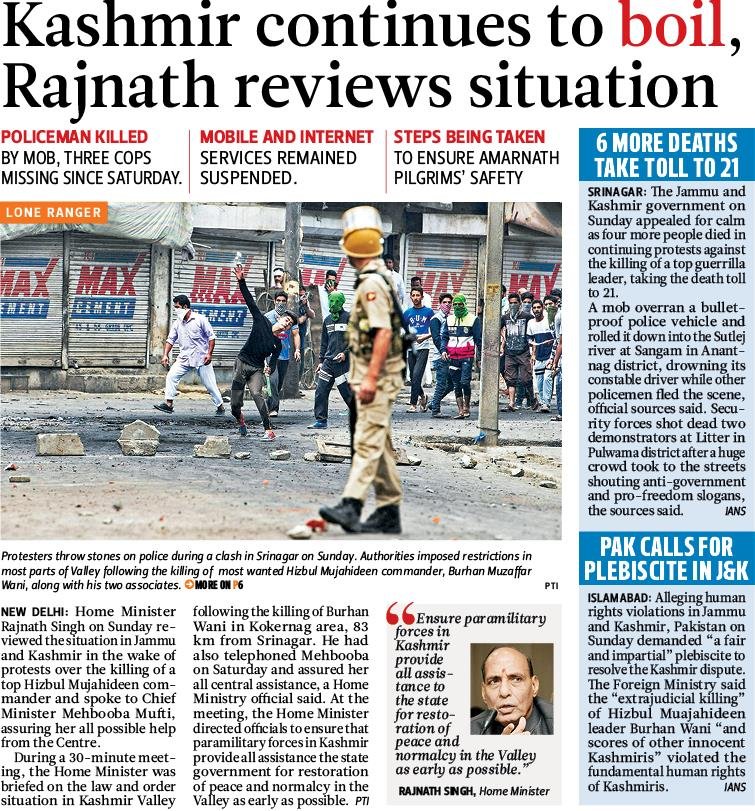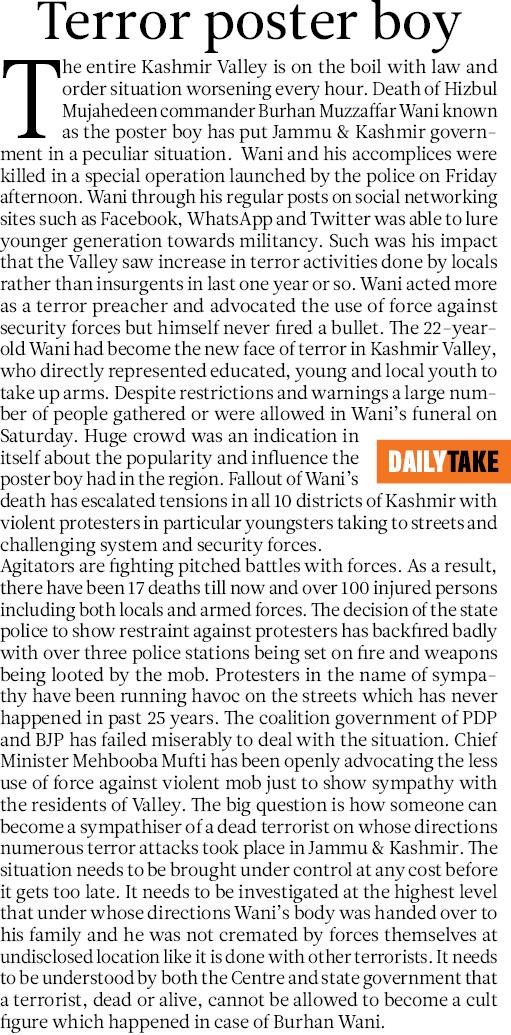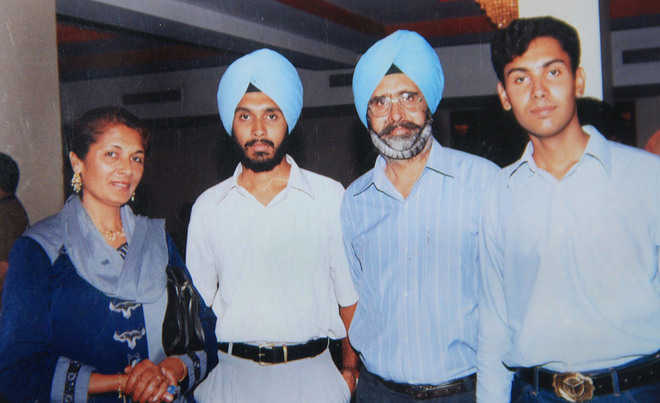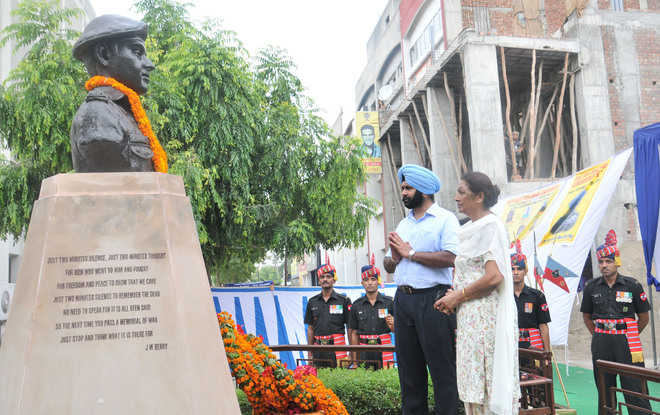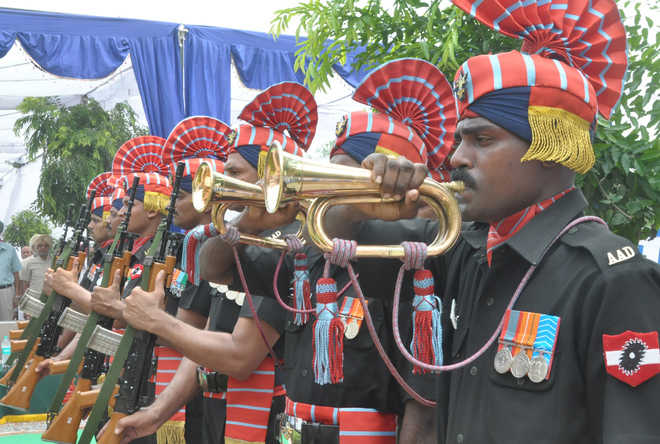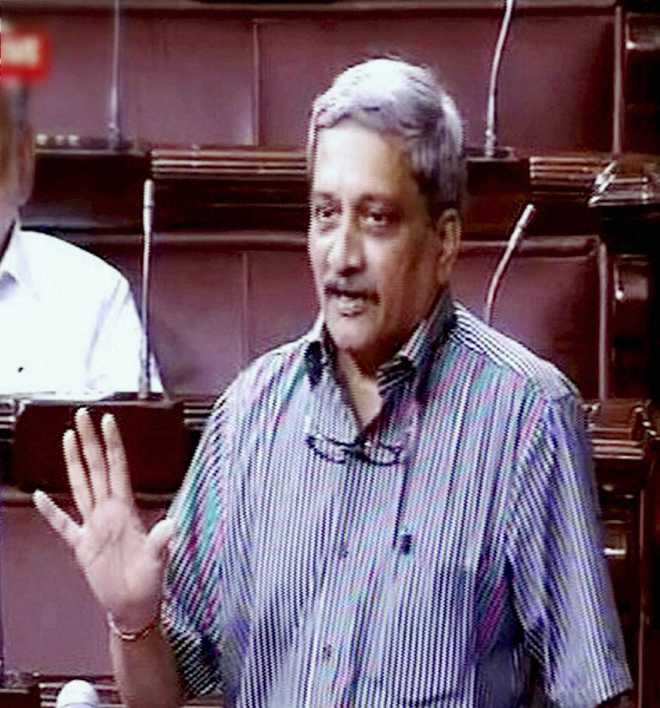
Defence Minister Manohar Parrikar speaks in the Rajya Sabha in New Delhi on Friday. — PTI/TV grab
New Delhi, July 29
The government on Friday said in the Rajya Sabha that the possibility of sabotage in the mysterious disappearance of AN-32 aircraft of IAF was “comparatively very less” and informed that the help of the US has also been sought in locating the plane.
All types of techniques are being used to locate the aircraft, Defence Minister Manohar Parrikar said while replying to clarifications sought by members on his suo motu statement on the disappearance of the aircraft on July 22.
As members expressed concern and raised questions over how the plane went missing, he said, “I can’t speculate because we are searching for it and I will not like to speculate. But I can say only this much. The possibility, although we are checking all angles, of any sabotage is comparatively very less because they have standard operating procedures.”
While sharing the concern of the members, he gave details of the operation being carried out for the last one week in trying to locate the plane, carrying 29 people, which went missing during a flight from Tambaram in Tamil Nadu to Port Blair.
“I appreciate anxiety of members. I am also disturbed at the sudden disappearance of the plane. I have spoken to several experts and former air chiefs who were also puzzled by the sudden disappearance,” Parrikar said.
The Minister said that at the time of disappearance, the aircraft was on “secondary/passive radar” and that “There was no SOS or transmission of any frequency. It just disappeared, so that is the worrying part”.
The government has sought help from the US for detection of images and is seeking help from American defence forces to ascertain whether their satellites had picked up any signal before the disappearance of the plane.
“It is total blank. There was not even a single signal recorded. That is the reason we are contacting American defence forces to ascertain whether their satellites picked up any signal,” Parrikar said.
“Besides our own satellite imagery, we have asked the US for their imagery for the detection of emergency frequency to space based assets. Foreign countries we have already asked. I only hope that our efforts succeed,” he added while replying to queries whether foreign help has been sought.
Queried about the age of the aircraft, the Defence Minister said it was “almost as good as new aircraft”.
Elaborating he said, “I don’t know exact age but it is well within lifetime. It has undergone first overhauling. Lot of replacement has been done…. They are considered as one of the safest aircraft.”
He said the accident rate of Indian Air Force is 0.23 out of 10,000 hours of flying against the global rate of 0.023 and assured the House that maximum efforts would be made to ensure that the mishaps come down.
“If aircraft is not fit for flying we don’t fly it. We have decided to check up whether we can improve the signalling system,” he added.
About the missing aircraft, Parrikar said that after the first overhaul, the plane had already done 279 hours and the pilot was experienced, having put in 500 hours on this route.
The Defence Minister, who had made suo motu statement on the plane’s disappearance in both Houses of Parliament yesterday, said, “Let us hope that we track it down. I can assure that maximum efforts will be taken.” Sharing details of the search operation so far, he said 10 Indian Navy ships as well as submarine ‘Sindhudhwaj’ are carrying searches and “virtually checking up everything”.
Twenty-three inputs had been located, out of which 6 were of the nature of blinks and all inputs have been checked, he said.
“If we locate something, then we can send deepwater equipment to pick up. We have also diverted ‘Sagar Nidhi’ (vessel) from Mauritius. It will reach on August one and it can go up to 6,000 metres depth. But we have to locate objects.
“We have to locate it because at this depth you cannot keep on scratching the bottom,” Parrikar said.
The Defence Minister said he was personally monitoring the situation. “We owe that much to the people, I have seen (to it) that every family is kept in touch.” Yesterday, he had said that “several inputs and leads” regarding floating objects have been picked up but there is no concrete evidence so far with respect to missing AN-32 aircraft of the IAF. — PTI
REUTERSA Chinese ship and helicopter conduct a rescue exercise near the Paracel Islands in South China Sea on Thursday.











